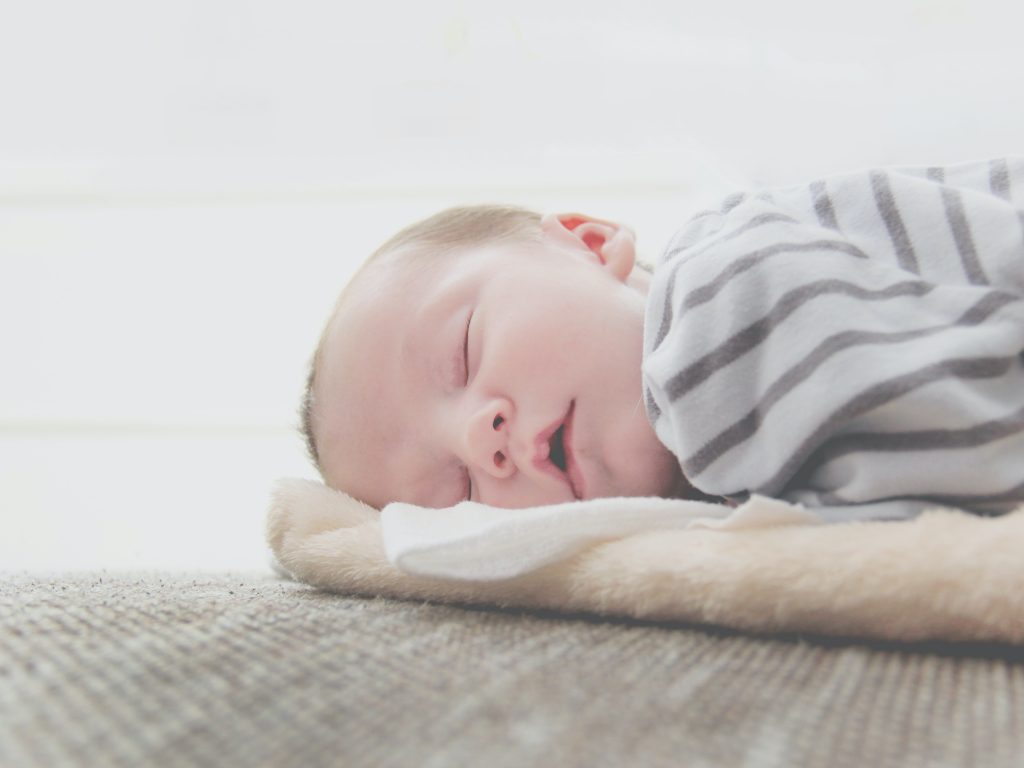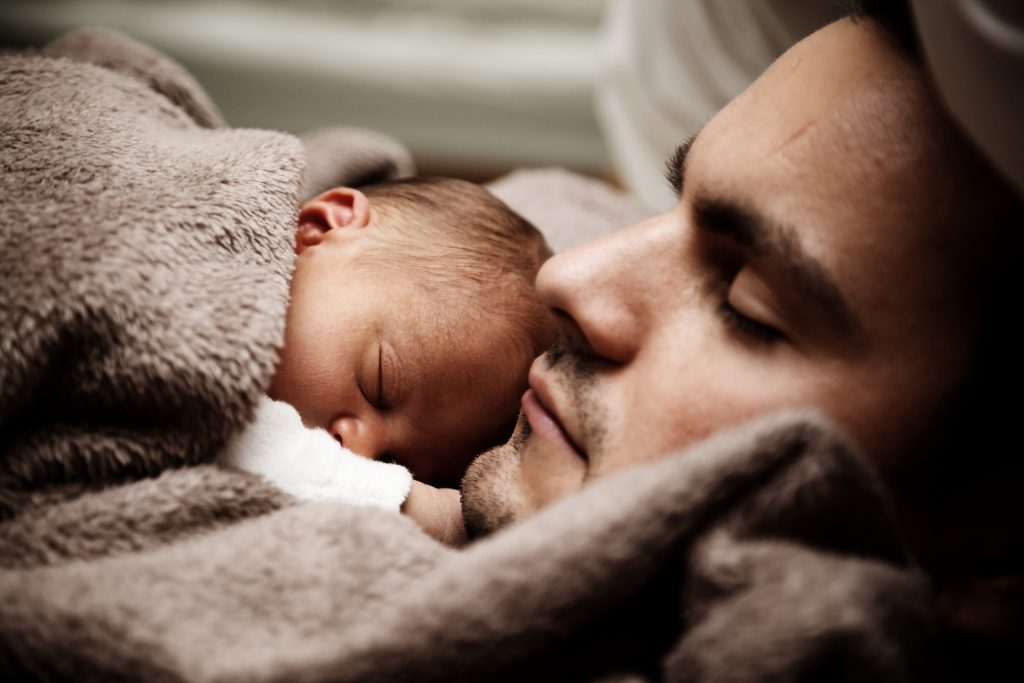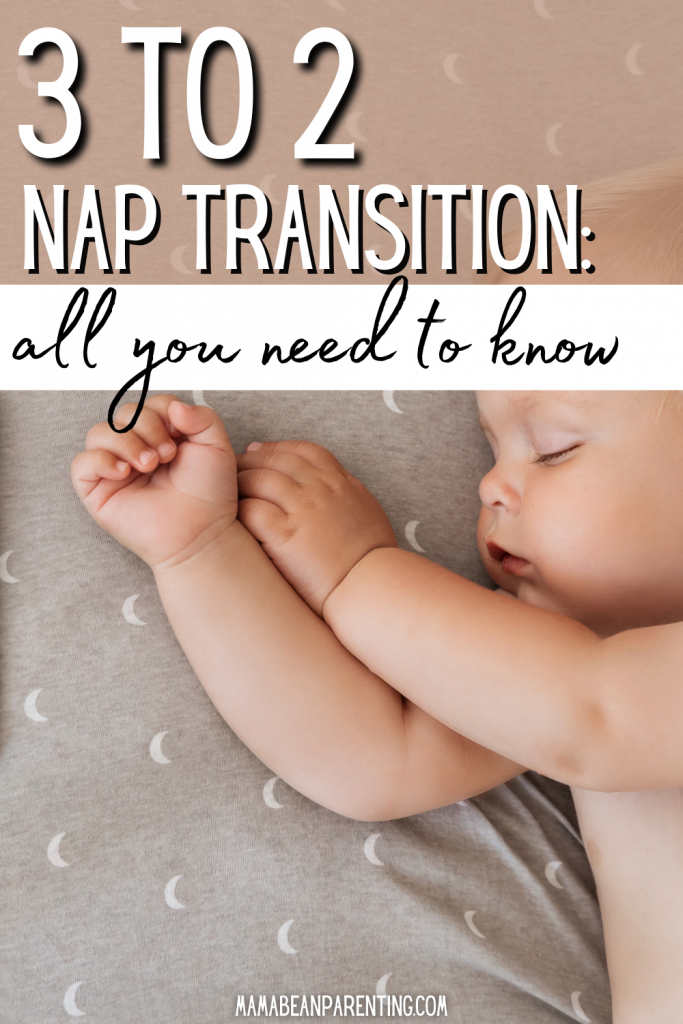This whole 3 to 2 nap transition topic can be a bit confusing to some moms—particularly the ones who’ve had their first baby.
Not only can transitions be very tricky but, at times, very challenging, and you know how high-quality sleep is essential, so you need to think things through carefully.
At some point (around 7 months old), you will most likely think it’s time to welcome the 3 to 2 nap transition, but just because it seems like it’s the perfect time for it (due to the signs it’s been showing), it doesn’t necessarily mean that it really is.
Yes, I know that you probably noticed that your baby is taking shorter naps, but still, it can mean everything or absolutely nothing.
Most moms then wonder if they embrace 3 to 2 nap transition, will it influence bedtime and sleep in general?
I do not want to complicate this situation further, so let’s see when babies transition to two naps and if your baby is ready to begin her 3 to 2 nap transition and have a new schedule.
Signs that Your Little One Is Ready For 3 to 2 Nap Transition

Since there’s no accurate answer to the “When do babies transition to two naps?” question, I’ll show you some signs that your baby is potentially ready for a 3 to 2-nap transition.
1. Your child is around 6 to 12 months old and has no issues sleeping at night.
What do I mean by that?
It means that it sleeps at least 10 hours each night with occasional (short) wakings that last several minutes.
Of course, it would be best if your kid slept all night without any breaks.
If you notice that your baby is having some difficulties falling asleep, you should prioritize that and postpone this entire 3 to 2 nap transition.
You’ll work on the schedule at some point.
2. Naps (both nap 1 and nap 2) have become much shorter (around 30 minutes), plus your baby needs more time to go back to sleep. This typically means that awake times are not good.
3. Your baby is not interested in the 3rd nap, but only in nap 1 and nap 2.
4. Third nap constantly pushes bedtime too late. (which can negatively impact the quality of sleep)
5. Your baby stays awake during the night for a more extended period (it is either crying or being playful). This is frequently caused by too much daytime sleep.
6. Because of 3 naps, your baby wakes up before 6 am and can’t go back to sleep. The main “culprit” is also lots of daytime sleep, which means that something must be done regarding nap 1 and nap 2 (or sleep schedule in general) to avoid these sleep-related problems.
Signs that It’s too Early For 3 to 2 Nap Transition

Now that I’ve partially answered your “When do babies transition to two naps?” question, it’s time to see how you can tell if your baby is not ready for 3 to 2 nap transition.
1. Your baby’s first two naps are very short, approximately 30-40 minutes.
Bear in mind that a baby needs to have at least 2 hours of daytime sleep every day. Otherwise, you’ll need to incorporate the third one, if you want it to make it to bedtime and have good-quality sleep.
If your baby has always been like this, then you should “offer” expanded naps first.
2. Your baby takes a third nap practically every day –
Although it occasionally refuses to take the third nap, that’s rarely the case, and it has all three naps most days of the week. Then it’s not time for any nap transition or new sleep schedule.
3. Your baby is experiencing sleep regression/big development –
Is your baby trying to crawl, sit up, or stand?
In case you didn’t know, a surge in brain development occurs during developmental milestones, and this oftentimes coincides with regression.
Therefore, if it having shorter naps is something that has happened recently, plus it is going through big developments, then it would be advisable to postpone this whole 3 to 2 nap transition thing for a while.
How come?
Well, it can be pretty challenging to change habits when it’s going through this, so no nap transitions or new schedules for the time being.
Effective Methods to Tackle 3 to 2 Nap Transition

Extend Wake Windows
If you want to manage this 3 to 2 nap transition the right way, then do not get rid of the nap too soon!
Generally speaking, resisting naps is actually quite common among babies (mainly when they are 6 months old or younger), since they need more awake time to become very tired.
If your little one is under 8 months old, or two naps are simply not enough, then offer it three naps for now, but make sure to stretch out the wake periods.
Instead of dropping the third nap before your child is actually ready, ensure to offer it extended wake windows in order to build the sleep pressure before the final nap begins.
Something like this is going to prevent bedtime from happening too early!
For instance, if your kiddo is 6 months old and has been avoiding the third nap, but isn’t capable of comfortably dealing with the longer wake windows (referring to the two-nap schedule), then it would be recommendable to lengthen the wake window before the third nap strikes if you want to establish a relatively good sleep schedule.
Third Nap on the Go May Be a Good Idea!
As babies overgrow the three-nap wake windows, they will frequently try to fight the last catnap, which can be pretty hard for you, especially during dinner time when you’re forced to handle a moody baby, while focusing on older kids.
Although you cannot force your little angel to fall asleep, what you can do is think of creative ways to encourage it to do so.
If you notice that your kiddo is having a hard time staying awake until bedtime, then my advice to you is to incorporate a so-called nap on the go. (this will definitely positively influence the overall schedule)
This is generally beneficial for both you and your child because you will get some fresh air.
The American Academy of Pediatrics has suggested numerous times to transfer babies to firm and flat surfaces if, by any chance, they fall asleep in a sling, stroller, or carrier.
Move Bedtime Earlier After a Skipped Nap
No matter how hard you try, there’ll be days when your baby will wake up and decide to throw some tantrums, meaning that it will refuse to take all three naps yet will struggle to stay awake until bedtime.
However, if you want to manage this entire 3 to 2 nap transition (or any other for that matter) successfully, then at times, you must be a lot more flexible.
The point is to move bedtime approximately thirty to sixty minutes earlier if your little one skips a nap.
Even though I know that most moms want to avoid (or at least reduce) overtiredness, at the same time, they do not want to offer their kids bedtime too early because it can result in different sleep problems.
Therefore, the only thing that you can do is to be flexible and find a perfect balance (when it comes to a nap schedule) and avoid having bedtimes before 6:00 PM.
Be Patient!
As I already stated numerous times, this whole 3 to 2 nap transition is not going to be easy. Even when you get your little one on a certain nap schedule, it will still need some time to adapt to the newest nap schedule.
Just because you decided to drop a nap, and have 2 naps instead of 3, then doesn’t instantly mean that your baby is ready to drop a nap in an instant.
Although there’s no doubt that it will get used to having 2 naps, in the beginning, it will most likely be very tired (because there’s no more 3rd nap).
Maybe even become grouchy or decides to have a few short naps a day. (don’t worry, they won’t last 5 hours, but more like 15 minutes, or a bit more)
So how much time will it take for it to adjust?
Well, according to my findings, it’s going to take around 2 to 4 weeks.
If it takes longer (you’ll notice the signs), then it would be advisable to make some modifications in terms of the wake window, awake time, etc., or consult your pediatrician.
Interesting Facts About 3 to 2 Nap Transition

1. When does it happen?
This transition normally occurs when your baby is 6 to 8 months old (give or take several weeks).
Each baby is different, therefore, if your child is older than 8 months and hasn’t transitioned yet, there’s no need to make a fuss about that. It will inevitably happen.
2. This whole schedule enables your baby to have 2 naps throughout the day, which is around 3 hours of daytime sleep.
This leads me to conclude that if your little angel has two naps during the day, one will last approximately 1,5 hours (or 1 hour if it’s shorter), while the other one can be a bit longer (2 hours).
And that’s how you get those 3 hours of daytime sleep. (it’s too early for this much calculation if you ask me!)
3. I know that I previously stated that you should opt for the on-go nap, and that’s undoubtedly true.
However, that’s not something that you should be doing all the time.
Instead, put her in the crib as frequently as possible.
Since now she’ll have only 2 naps, you want them to be top-quality, right?
And there’s no need to remind you that sleeping in the crib is much better than when it’s on the go. Just remember how exhausted you feel if you have a nap in the car or airplane. It’s never as good as the one you have in your own bed.
4. On the 2-nap schedule, you will finally be able to have a set schedule.
Hooray, hooray, hooray! This means that you have successfully set times that your little angel will have 2 naps each day. Great job, momma!
Conclusion

Everything that I wrote about this topic made me realize that there are so many things (and signs that you should focus on) you need to take into consideration (like awake time, wake window, if your baby is cranky or not, etc.).
So to all of you mothers who are tackling this impeccably, the only thing that I could say is “Bravo!”.
And to all of you who are preparing yourself (both physically and mentally) to deal with this 3 to 2 nap transition (a very complex one), I have to say, “You got this!”.

Well, hello there!
My name is Jennifer. Besides being an orthodontist, I am a mother to 3 playful boys. In this motherhood journey, I can say I will never know everything. That’s why I always strive to read a lot, and that’s why I started writing about all the smithereens I came across so that you can have everything in one place! Enjoy and stay positive; you’ve got this!



Can You Feed A Baby In A Car Seat? • Mama Bean Parenting
Wednesday 22nd of February 2023
[…] example, 3 to 2 nap transitions are always stressful for […]